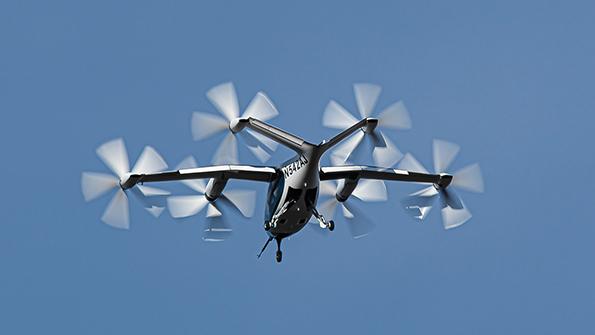
Stop me if you have heard this before: A whole new class of aircraft will democratize and revolutionize seemingly everything, starting with air travel. Will it be advanced air mobility or maybe very light jets?
Aviation consultant Brian Foley recalls the latter while thinking of the former, since both are in the news recently. Disruptive paradigms are not a new threat to aviation, even this century, he notes.
The Eclipse very light jet (VLJ) was intended to make airborne commuting more of a reality before it became a $1.5 billion “smoking crater in the ground.” In November, the U.S. Bankruptcy Court for the District of Delaware authorized the sale of Eclipse Aerospace and the Eclipse Aircraft project to AML Global Eclipse, backed by British businessman Christopher Harborne, for $5.25 million.
Now some observers wonder whether urban air mobility (UAM) and advanced air mobility (AAM) will experience something similar. “There are two sides of the fence, and you’re either on one side or another,” Foley pointed out in a recent edition of the Aerospace Executive Podcast with talent finder Craig Picken. “One side of the fence is that this is disruptive technology, and this will just change the whole landscape of how people travel in cities and between regional points. Some investors believe that, too, and they are putting some chips down on the different potential winners if this thing does come out on the other end and is successful.
“There are others that are a little bit curious to see how this thing works,” Foley continued. “We’ve had helicopter service for years, which isn’t all that much different. There are some concerns over noise—these things are overgrown drones.”
Yes, billions of dollars are pouring into UAM/AAM, but is it actually significant yet? Silicon Valley is behind this, as are multiple other investors. But UAM/AAM represents a fraction of their investments, which are otherwise cast far and wide and could include UAM/AAM only as a one-off gamble.
“Even though it seems like a big number to us, it’s just pocket change to them,” Foley said. “They hope there is a return. Right now, there are as many arguments why it’s going to succeed and won’t succeed.”
Such context is easy to forget amid the flurry of recent headlines, such as Joby Aviation’s takeover of Uber Elevate and a reported public trading debut on the horizon. What is more, consultants continue to publish eye-catching reports about the market’s value in coming decades.
The latest from Deloitte consultancy and the Aerospace Industries Association (AIA) says the UAM/AAM sector could be worth $115 billion a year by 2035, employing more than 280,000 “high-paying” aerospace workers and generating an annual $20 billion in U.S. exports.
“It’s become increasingly apparent that this particular area has become more real,” AIA Vice President for Civil Aviation David Silver told Aviation Week ahead of the release of the Jan. 26 study. “This is very real technology that is just on the horizon, and there is no single silver bullet that is going to make it happen.”
Deloitte’s global and U.S. aerospace and defense leader, Robin Lineberger, concurred during the interview. The report pushes for a sustained, collaborative approach by the public and private sectors for electric vertical-takeoff-and-landing (eVTOL) aircraft to be widely accepted and adopted, sooner rather than later. “With the market poised to grow sevenfold between 2025 and 2035, it’s important for U.S. policymakers and industries to cooperate now to ensure American leadership in this transformative emerging sector,” he said.
Already, the global race for AAM leadership is intensifying, the groups said, and the U.S. faces strong competition from China, Germany and South Korea. As a result, the AIA-Deloitte document calls for streamlined eVTOL testing and certification as well as seamlessly integrating aircraft into the U.S. airspace system.
Silver said it is important to shed light on the issue now, at the beginning of the Biden administration, as Washington is expected again to consider domestic infrastructure development as a key priority. The point is to broaden policymakers’ horizons, he said, so that they wonder, “Are we even asking the right questions?”
Still, other observers point out that—like almost everything in aerospace—paradigm shifts come slowly compared with other business sectors. Take the City-Airbus vision from the European giant: “Realistically, we will have to wait until the end of the decade to see more than a demonstrator,” Airbus Helicopters CEO Bruno Even acknowledged in a November press briefing.
Even’s boss, Airbus CEO Guillaume Faury, was even more clear-eyed days later in a separate online debate with an automotive CEO. Faury explained that eVTOL projects, such as the Vahana two-seater and the CityAirbus four-seater, should be seen primarily as low-cost demonstrators for future technology on commercial aircraft.
Faury stressed: “There will be a market eventually, but profitability will be tricky at the start."






Comments
Will there be UAM/Advance Air Mobility in the future? Absolutely. But its high cost will insure that it will remain a niche market which will be used mainly by the rich to fly above the common herd. UAM/Advance Air Mobility will be focused, out of economic necessity, on the same people who will fly in the supersonic business jets now in development.